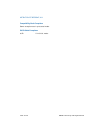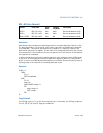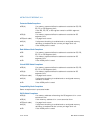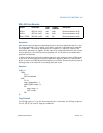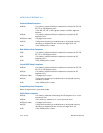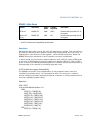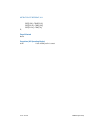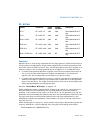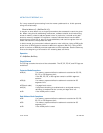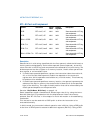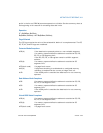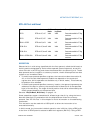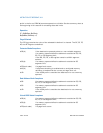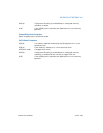
3-76 Vol. 2A BT—Bit Test
INSTRUCTION SET REFERENCE, A-M
Or, it may access 2 bytes starting from the memory address for a 16-bit operand,
using this relationship:
Effective Address + (2 ∗ (BitOffset DIV 16))
It may do so even when only a single byte needs to be accessed to reach the given
bit. When using this bit addressing mechanism, software should avoid referencing
areas of memory close to address space holes. In particular, it should avoid refer-
ences to memory-mapped I/O registers. Instead, software should use the MOV
instructions to load from or store to these addresses, and use the register form of
these instructions to manipulate the data.
In 64-bit mode, the instruction’s default operation size is 32 bits. Using a REX prefix
in the form of REX.R permits access to additional registers (R8-R15). Using a REX
prefix in the form of REX.W promotes operation to 64 bit operands. See the summary
chart at the beginning of this section for encoding data and limits.
Operation
CF ← Bit(BitBase, BitOffset);
Flags Affected
The CF flag contains the value of the selected bit. The OF, SF, ZF, AF, and PF flags are
undefined.
Protected Mode Exceptions
#GP(0) If a memory operand effective address is outside the CS, DS,
ES, FS, or GS segment limit.
If the DS, ES, FS, or GS register contains a NULL segment
selector.
#SS(0) If a memory operand effective address is outside the SS
segment limit.
#PF(fault-code) If a page fault occurs.
#AC(0) If alignment checking is enabled and an unaligned memory
reference is made while the current privilege level is 3.
#UD If the LOCK prefix is used.
Real-Address Mode Exceptions
#GP If a memory operand effective address is outside the CS, DS,
ES, FS, or GS segment limit.
#SS If a memory operand effective address is outside the SS
segment limit.
#UD If the LOCK prefix is used.



